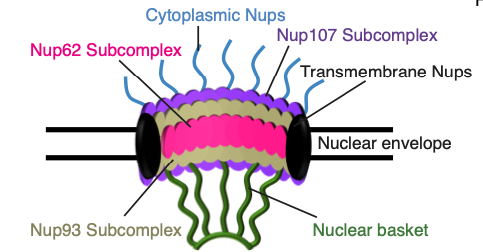Abstract
Germ cells differentiate into oocytes that launch the next generation upon fertilization. How the highly specialized oocyte acquires this distinct cell fate is poorly understood. During Drosophila oogenesis, H3K9me3 histone methyltransferase SETDB1 translocates from the cytoplasm to the nucleus of germ cells concurrently with oocyte specification. Here, we discovered that nuclear SETDB1 is required for silencing a cohort of differentiation-promoting genes by mediating their heterochromatinization. Intriguingly, SETDB1 is also required for upregulating 18 of the ∼30 nucleoporins (Nups) that compose the nucleopore complex (NPC), promoting NPC formation. NPCs anchor SETDB1-dependent heterochromatin at the nuclear periphery to maintain H3K9me3 and gene silencing in the egg chambers. Aberrant gene expression due to the loss of SETDB1 or Nups results in the loss of oocyte identity, cell death, and sterility. Thus, a feedback loop between heterochromatin and NPCs promotes transcriptional reprogramming at the onset of oocyte specification, which is critical for establishing oocyte identity.
Prior Versions
A preprint of this manuscript was originally posted to bioRxiv
